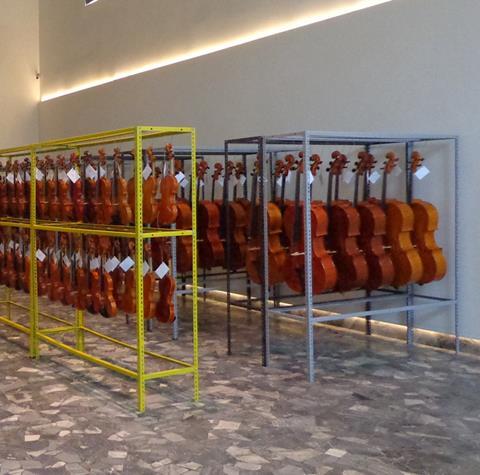Has the demand for 'high standards' at violin making competitions left any room for individuality and personality, asks Michael Köberling

My stay in Cremona for the Mondomusica trade show this September took place at the same time as the exhibition of the Triennale violin making competition, which has run once every three years since 1976.
This is arguably one of the most respected lutherie competitions around today, alongside those of the Violin Society of America (VSA), Mittenwald and various new contests in China.
Many luthiers think that we have reached a ‘New Golden Age’ of violin making; our standards are higher than ever before. But to meet these standards, makers entering competitions are faced with a dilemma: when making a new instrument (without antiquing, which is only allowed at the VSA), what is considered to be ‘right’ and what is ‘wrong’?
The juries of these competitions, consisting of both luthiers and musicians, do an outstanding and exhaustive job. The luthiers judge the technical level of the work, set-up, varnish quality, and overall style and character.
The musicians then judge sound quality, strength of tone, balance between the strings, and playability. But however carefully the judges make their decisions, they prevent makers from being as experimental or creative as they might otherwise be. For example, when making a competition violin (this does not apply to violas or cellos), makers typically choose a Stradivari model from the Golden Period; less frequently, they will copy a Guarneri ‘del Gesù’.
Do they make copies of other classical Cremonese models or even instruments from other Italian schools? No. This is for two main reasons. Firstly, Strad models probably give the best foundations from which to reach the acoustic requirements of competitions; secondly, copying a Strad can never be deemed ‘wrong’.
Makers ambitious to win competitions therefore set out to build instruments that look and sound ‘perfect’, to convince the jury – but how does this affect the ‘overall style and character’ part of the judging process? For anyone with lesser-trained eyes, many of the instruments on display will look almost identical. Has any room been left for individuality and personality?
This is not just a problem in competitions: over the past 30 years increasing amounts of expertise have become available to support the growing base of young violin makers across the world. They can get the information they need to make more and more ‘perfect’ violins using online forums and just a quick click of a mouse, instead of using books with high-quality, close-up photos to see the idiosyncrasies of past master makers.
If we look back in time – early to mid-19th-century Italy, for example – violin makers chose to copy Strad models, just as they do today, but those makers instilled their own personality into their instruments. Many violins from that time have appreciated dramatically in value, yet they have charming, unique qualities that render them identifiable in their own right, often without us having first to look at the label.
For example, Giuseppe Ornati made instruments with rounded corners, scroll chamfer, and atypical f-holes. His colleague Ferdinando Garimberti often used cello-width purfling in his earlier violins, and he seems to have designed his early cello model entirely himself. What would happen if an instrument of this sort of personality were entered into a modern-day competition? It would be unlikely to get very far, because it would not comply with a jury’s definition of a winning instrument.
At this year’s Triennale all instruments that reached the final were of outstanding quality; some even had unique and personal characteristics in, for example, their varnish. Nevertheless, perhaps a special prize should be given to makers whose instruments have real personality because, although this would be a highly subjective category, it might encourage luthiers to be creative.
We should not forget that in concert halls worldwide today, we still hear only a few outstanding modern instruments. Most are the wonderful old ones that were born out of luthiers’ hearts and souls.
Read: I shy away from copying models that are too individual, says violin maker Sam Zygmuntowicz


































No comments yet